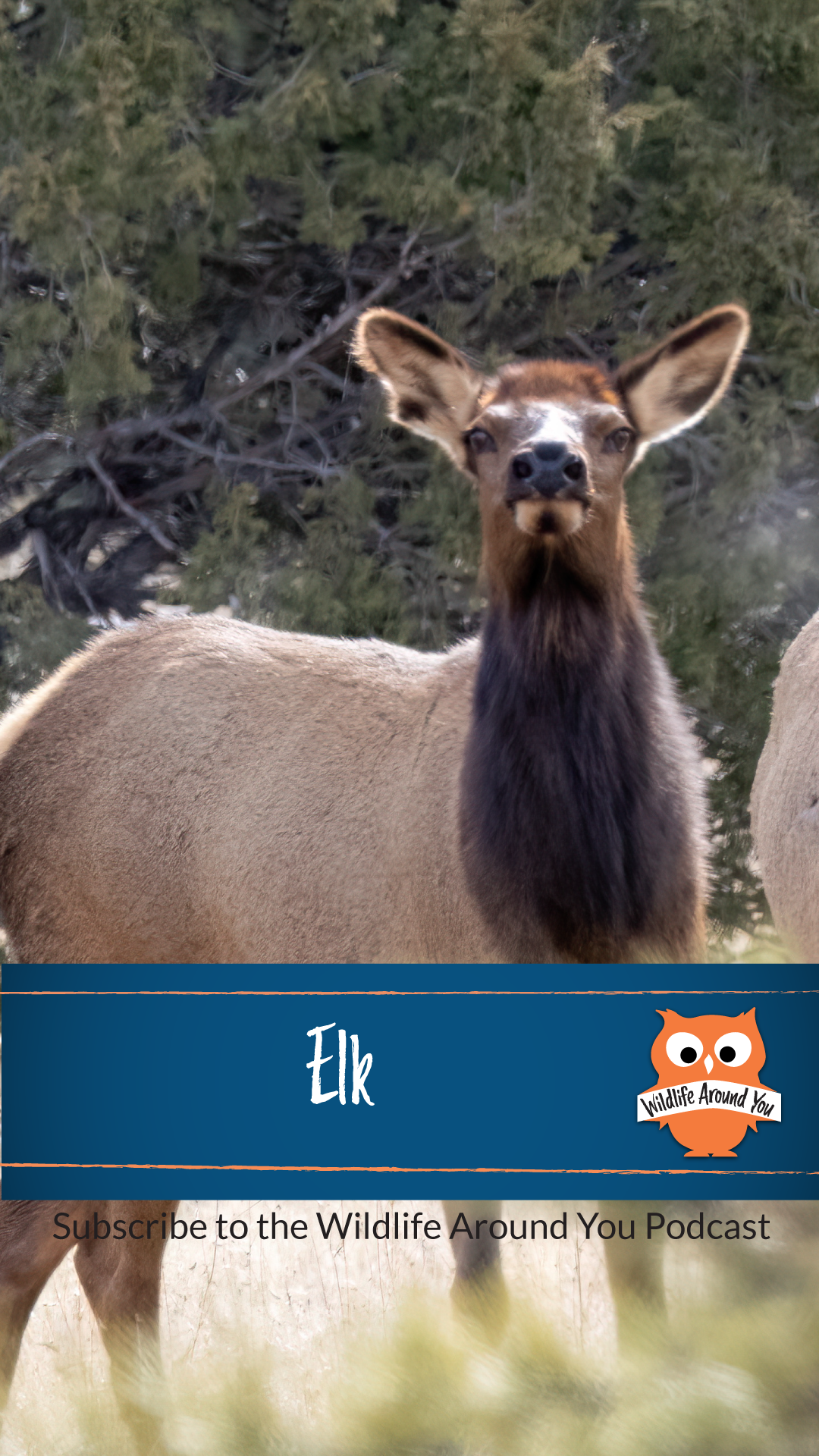Identification
- Elk, also known as wapiti(which means “white rump” in Shawnee), are large members of the deer family.
- They are one of the largest land mammals in North America and Eurasia.
- Adult males, called bulls, can weigh between 700 to 1,000 pounds and stand about 5 feet tall at the shoulder.
- Female elk, called cows, are smaller in size, weighing around 500 pounds.
Habitat
- Elk inhabit a variety of habitats, including forests, woodlands, mountains, and grasslands.
- They are found in North America, primarily in the western and northern parts, as well as in parts of Asia and Europe.
- Elk prefer areas with a mix of open meadows for grazing and cover for protection.
- They are nomadic and move throughout their range in search of food and suitable habitat.
- Elk seek out areas with ample vegetation for grazing during the summer and descend to lower elevations during winter for better forage.
Behavior
- Elk are social animals that usually live in herds or groups.
- During the summer, male and female elk typically form separate herds, but during the mating season (rut), they come together.
- Bulls engage in competitive displays to establish dominance and attract mates. This includes bugling and sparring with their antlers.
- Elk are known for their agility and can run at speeds up to 40 miles per hour.
- They prefer the cooler weather, and are more active during the cold.
- To try and impress a mate, a bull elk will dig a hole in the ground, fill it with urine and then roll around it hoping that the scent will be attractive.
Offspring
- Female elk give birth to a single calf, occasionally twins, after a gestation period of about 8.5 months.
- Calves are born with spots on their fur, which help them blend into the surroundings.
- The mother hides her calf in vegetation for protection during the first few weeks of its life. Usually at least 16 days. They are also born with no scent to avoid attracting predators.
- Calves stay with their mothers for about a year before becoming independent.
Predators
- Elk have several natural predators, including wolves, bears, mountain lions, and coyotes.
- Wolf packs often target elk herds, especially weakened or vulnerable individuals.
- Calves are more susceptible to predation due to their smaller size and lack of experience.
Diet
- Elk are herbivores and primarily feed on plants.
- Their diet consists of grasses, sedges, shrubs, leaves, twigs, and bark.
Fun Facts
- Elk have impressive antlers, which are shed and regrown each year. Only the males have antlers, and they have been known to grow as much as an inch in one day.
- The antlers can weigh up to 40 pounds and span up to 4 feet across.
- Elk communicate through a variety of vocalizations, including bugling, grunts, and barks. They are the loudest members of the deer family.
- They are excellent swimmers and can cross rivers and lakes if necessary.
- Elk are strong and agile jumpers, capable of clearing fences and obstacles up to 8 feet high.
- They have been introduced to several national wildlife refuges to help restore grass prairie ecosystems.
- Unlike many deer species, they live longer in the wild than captivity. Averaging about 26 years in the wild.

